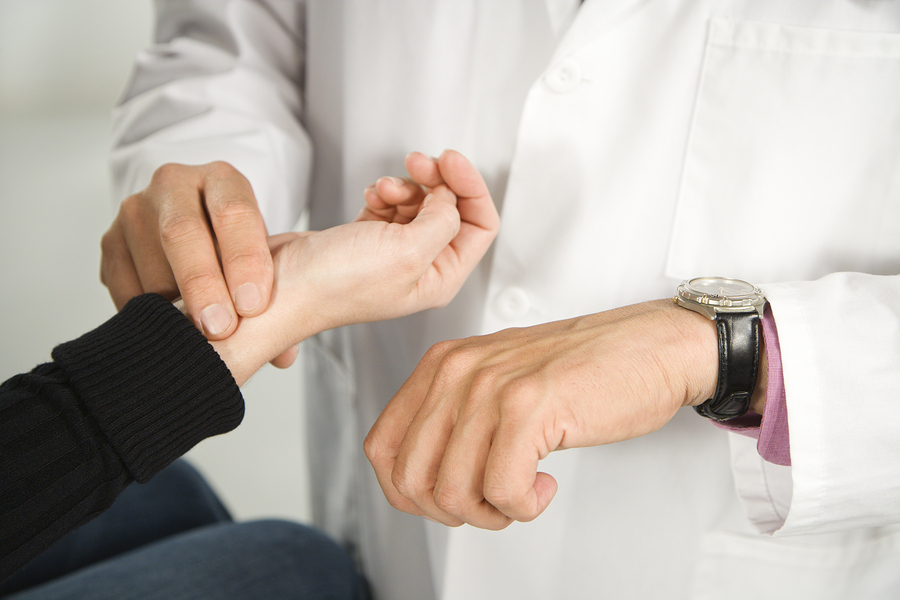A normal heart rate for a resting adult is usually 60 to 100 beats per minute. When your heart rate is too slow its referred to as bradycardia.
 Low Heart Rate Shortness Of Breath Rating Walls
Low Heart Rate Shortness Of Breath Rating Walls
Underlying disorders such as obstructive sleep apnea or hypothyroidism may cause low pulse.

What is a low pulse rate. Doctors consider a heart rate below 60 beats per minute as low Dr. Doctors usually consider a low pulse as less than 60 beats per minute. February 10 2021 An underlying heart problem is often the cause of a low heart rate.
The most common symptoms of a low heart rate according to the American Heart Association are fatigue confusion dizziness shortness of breath especially during. The fitter you are the lower your resting heart rate is likely to be. For example a well-trained athlete might have a normal resting heart rate closer to 40 beats per minute.
A low pulse rate can compromise your circulation. But if you have a low heart rate and are experiencing symptoms like fainting fatigue and dizziness then you should make an appointment with your GP. The typical range of 60 to 100 beats per minute is.
An EKG reading gives clues about a low pulse rate. Generally having a low pulse rate means you are perfectly healthy. Some medications including those for heart conditions can cause you to develop a.
Generally a lower heart rate at rest implies more efficient heart function and better cardiovascular fitness. Your heart may not pump fast enough to keep a healthy flow of blood up to your brain and throughout your body. If you have bradycardia youll have a sustained heart rate below 60 even when youre awake and active.
It can be normal in some people for example athletes or those taking medications like beta-blockers but could indicate heart problems or other issues so should be assessed by a doctor. What Is a Dangerously Low Pulse Rate. Any heart rate below this is considered too low.
A slow heart rate can be normal and healthy for example many fit people and young adults have a slow heart rate because the organ is so fit. For athletes and people that exercise. A persons pulse rate which indicates their heart rate is how many times the heart beats per minute.
For example athletes may have a resting heart rate of 40 to 60bpm or lower. Fainting of course can lead to dangerous falls and bone fractures. Most adults have a resting heart rate between 60 and 100bpm.
In general for adults a resting heart rate of fewer than 60 beats per minute BPM qualifies as bradycardia. Patients often ask if they have a low heart rate and whether there are a certain number of beats per minute below which they should be concerned. Answer 1 of 10.
When your body emits a low resting pulse rate it can be a result of being extremely physically fit. Bradycardia is a condition that is commonly called low heart rate. How slow is too slow.
Bradycardia is typically defined as a heart rate thats less than 60 beats per minute. Treatments for Low Pulse Rate Cure Underlying Diseases. According to the Mayo Clinic a person with a slow rate or bradycardia has a heart that beats fewer than 60 times per minute.
This is especially true if you have symptoms of a low pulse such as dizziness or shortness of breath. A normal range is from 60 to 100 beats-per-minute while awake. The medical term for a heart rate of around or less than this is bradycardia.
Sometimes a low heart rate is defined as below 60 beats per minute but it would probably make more sense to have low heart rate defined as below 50 beats per minute. Your heart rate may fall below 60 BPM during deep sleep. A low heart rate is classified as a heart rate less than 60 bpm.
And physically active adults and athletes often have a resting heart rate slower than 60 BPM. A low heart rate below 60 beats per minute is called bradycardia. A normal resting heart rate for adults ranges from 60 to 100 beats per minute.
An individual who experiences signs of decreased heart rhythms should be evaluated by a physician. However sometimes your pulse rate can become dangerously low. But if you are not an athlete and your low pulse rate includes symptoms of weakness and dizziness you may have some minor electrical issues with your heartNormal people have a heart rate of 60 to 100 beats per minute BPM when awake however whilst at rest or when asleep.
A normal heart rate falls in the range of 60 to 100 beats per minute. The medical term for a low pulse rate that falls below 60 beats per minute is bradycardia which could be a symptom of a serious condition. But there are exceptions.
Your pulse can be felt by placing 2 fingers on the inside of your wrist the side of your neck the. To measure your heart rate simply check your pulse. Low Rates in Active Bodies.
People who are very active including athletes tend to have naturally lower resting pulse. For some people such as athletes bradycardia doesnt pose a health risk.




